-
 Bitcoin
Bitcoin $108,017.2353
-0.81% -
 Ethereum
Ethereum $2,512.4118
-1.58% -
 Tether USDt
Tether USDt $1.0002
-0.03% -
 XRP
XRP $2.2174
-1.03% -
 BNB
BNB $654.8304
-0.79% -
 Solana
Solana $147.9384
-1.76% -
 USDC
USDC $1.0000
-0.01% -
 TRON
TRON $0.2841
-0.76% -
 Dogecoin
Dogecoin $0.1636
-2.09% -
 Cardano
Cardano $0.5726
-1.72% -
 Hyperliquid
Hyperliquid $39.1934
1.09% -
 Sui
Sui $2.9091
-0.59% -
 Bitcoin Cash
Bitcoin Cash $482.1305
0.00% -
 Chainlink
Chainlink $13.1729
-1.54% -
 UNUS SED LEO
UNUS SED LEO $9.0243
-0.18% -
 Avalanche
Avalanche $17.8018
-1.90% -
 Stellar
Stellar $0.2363
-1.69% -
 Toncoin
Toncoin $2.7388
-3.03% -
 Shiba Inu
Shiba Inu $0.0...01141
-1.71% -
 Litecoin
Litecoin $86.3646
-1.98% -
 Hedera
Hedera $0.1546
-0.80% -
 Monero
Monero $311.8554
-1.96% -
 Dai
Dai $1.0000
-0.01% -
 Polkadot
Polkadot $3.3473
-2.69% -
 Ethena USDe
Ethena USDe $1.0001
-0.01% -
 Bitget Token
Bitget Token $4.3982
-1.56% -
 Uniswap
Uniswap $6.9541
-5.35% -
 Aave
Aave $271.7716
0.96% -
 Pepe
Pepe $0.0...09662
-1.44% -
 Pi
Pi $0.4609
-4.93%
How is the algorithm of IPFS mining different from other mining methods?
Unlike Bitcoin mining's computational focus, IPFS mining rewards users for providing storage and bandwidth to the decentralized network, incentivizing long-term data availability and network stability.
Mar 20, 2025 at 04:21 am
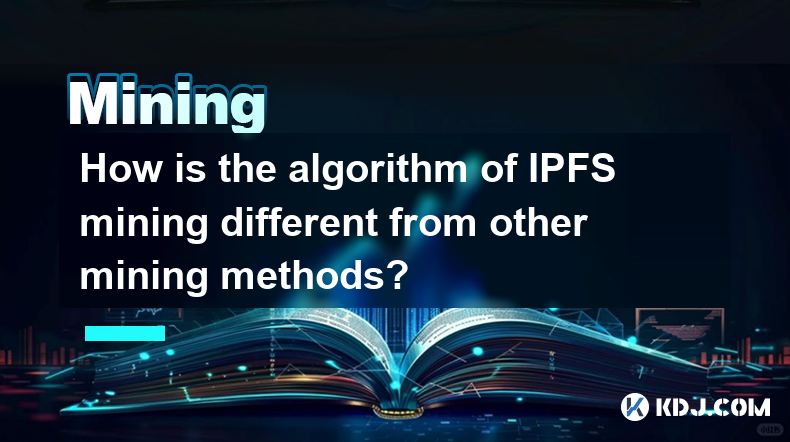
Key Points:
- IPFS mining differs fundamentally from traditional cryptocurrency mining like Bitcoin or Ethereum mining. It focuses on storage and bandwidth contribution rather than computational power.
- Instead of solving complex cryptographic puzzles, IPFS miners provide storage space and network bandwidth to the decentralized network.
- Rewards in IPFS mining are tied to the quality and availability of the storage and bandwidth provided, unlike the fixed block rewards in Proof-of-Work systems.
- The economic incentives within IPFS mining are designed to encourage long-term data storage and network stability.
- Several projects build on IPFS, offering various approaches to mining and earning rewards. Understanding these nuances is crucial.
How is the Algorithm of IPFS Mining Different from Other Mining Methods?
Traditional cryptocurrency mining, such as Bitcoin's Proof-of-Work (PoW) mechanism, relies on miners competing to solve complex mathematical problems using specialized hardware. The first miner to solve the problem adds a new block to the blockchain and receives a block reward. This process consumes significant energy. IPFS, on the other hand, employs a different paradigm. It's not about solving puzzles; it's about contributing valuable resources.
IPFS mining focuses on providing storage and bandwidth to the network. Miners dedicate hard drive space to store files and make their bandwidth available for sharing data. This contributes to the overall health and resilience of the decentralized storage network. The more storage and bandwidth a miner provides, and the more consistently available these resources are, the higher the potential rewards. This is a key difference—the algorithm rewards utility, not computational power.
The reward mechanism in IPFS mining is not based on a fixed block reward like in PoW systems. Instead, it's often tied to the amount of storage provided, the data's retrieval speed, and the miner's network uptime. The value of the reward can fluctuate depending on network demand and the overall health of the IPFS network. Some projects might also incorporate token-based reward systems, rewarding participants with their native tokens.
Unlike PoW, IPFS mining is significantly more energy-efficient. While hard drives consume power, the energy consumption is considerably less compared to the energy-intensive ASICs used in Bitcoin mining. This makes IPFS mining a more environmentally friendly option. The focus shifts from raw computational power to reliable storage and bandwidth provision.
Several projects have emerged that leverage the IPFS network and offer their own unique approaches to mining. These projects may use different tokenomics, reward systems, and even storage requirements. For example, some might focus on incentivizing long-term storage, while others might prioritize fast retrieval speeds. It's important to research individual projects thoroughly to understand their specific mining mechanisms and potential risks.
Different Approaches to IPFS Mining:
There isn't a single, universally accepted "IPFS mining" algorithm. Instead, various projects build on top of the IPFS network and implement their own incentive mechanisms. These approaches might include:
- Filecoin: Filecoin is a decentralized storage network built on top of IPFS. It utilizes a Proof-of-Replication and Proof-of-Spacetime consensus mechanism to reward miners for storing and retrieving data. This involves proving the storage of data and its availability.
- Other Storage Networks: Numerous other projects leverage the IPFS infrastructure but use alternative consensus mechanisms and reward structures. These may involve staking, delegated proof-of-stake, or other innovative approaches to incentivize participation.
- Community-Driven Initiatives: Some community-driven projects might incentivize IPFS node operation through grants, donations, or other forms of community support.
Understanding the specific requirements and reward mechanisms of each project is crucial before participating in any IPFS-related mining activity.
Frequently Asked Questions:
Q: Is IPFS mining profitable?
A: The profitability of IPFS mining depends on several factors, including the cost of hardware (hard drives, bandwidth), the price of any associated tokens, the storage space provided, and the demand for storage on the network. Profitability is not guaranteed and can be highly variable.
Q: What hardware is needed for IPFS mining?
A: The hardware requirements depend on the chosen project and your desired level of participation. Generally, you will need a computer with sufficient storage space (hard drives or SSDs) and a stable internet connection with sufficient bandwidth. The amount of storage and bandwidth needed varies significantly.
Q: Is IPFS mining environmentally friendly?
A: Compared to Proof-of-Work cryptocurrencies, IPFS mining is significantly more energy-efficient. The energy consumption is primarily determined by the hard drives and network connectivity, which are considerably less energy-intensive than ASIC miners used in PoW systems.
Q: How can I get started with IPFS mining?
A: Getting started involves researching specific projects built on IPFS, such as Filecoin. Each project has its own setup and participation requirements, which typically involve downloading and installing their software, setting up your storage, and potentially staking tokens. Carefully review each project's documentation before proceeding.
Q: What are the risks associated with IPFS mining?
A: The risks include hardware failure, network outages, fluctuations in token prices (if applicable), and the potential for project failure. Thorough research and risk assessment are essential before investing time and resources into IPFS mining.
Q: How does IPFS differ from other decentralized storage solutions?
A: IPFS provides a content-addressable, peer-to-peer file system, while other solutions may use different approaches to data storage and retrieval. IPFS's focus on decentralization and content addressing makes it a unique platform for building decentralized storage applications. However, its implementation and the way it's incentivized varies across different projects.
Disclaimer:info@kdj.com
The information provided is not trading advice. kdj.com does not assume any responsibility for any investments made based on the information provided in this article. Cryptocurrencies are highly volatile and it is highly recommended that you invest with caution after thorough research!
If you believe that the content used on this website infringes your copyright, please contact us immediately (info@kdj.com) and we will delete it promptly.
- Cryptos in July 2025: Massive Gains or Just Hype?
- 2025-07-05 20:30:13
- Pepe's EVM Layer 2 Meme Coin Mania: What's the Hype?
- 2025-07-05 20:50:12
- Shiba Inu, Dogecoin, and the Crypto Skyrocket: What's Making These Memes Soar?
- 2025-07-05 21:10:12
- Tokenized Stocks: Robinhood, Gemini, and the NYSE Threat
- 2025-07-05 21:10:12
- Altcoin Adventures: Navigating the Pepe Fork Frenzy and Solana's Summer Swings
- 2025-07-05 21:15:12
- Hong Kong's Tokenised Bond Leap: Zero Stamp Duty Sparks Web3 Ambitions
- 2025-07-05 20:30:13
Related knowledge
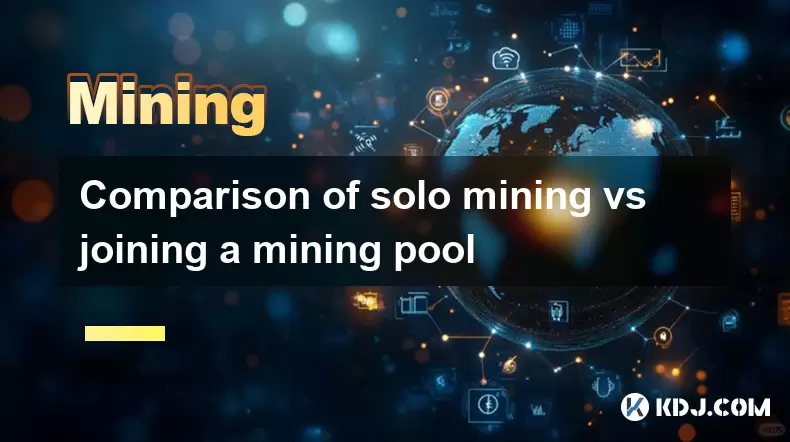
Comparison of solo mining vs joining a mining pool
Jul 05,2025 at 07:17pm
Understanding the Basics of Cryptocurrency MiningCryptocurrency mining involves validating transactions and adding them to a blockchain through computational power. Miners use specialized hardware, such as ASICs or GPUs, to solve complex cryptographic puzzles. Upon successfully solving these puzzles, miners are rewarded with newly minted coins. This pro...

How to tell if a mining pool is legitimate or a scam?
Jul 03,2025 at 12:35pm
Understanding the Role of Mining PoolsMining pools play a crucial role in cryptocurrency mining by allowing individual miners to combine their computational resources and increase the likelihood of earning block rewards. A legitimate mining pool distributes rewards fairly, maintains transparency in operations, and has a strong community presence. Howeve...

What software do I need to join a mining pool?
Jul 05,2025 at 07:32pm
Understanding Mining Pools and Their RequirementsJoining a mining pool is an essential step for many cryptocurrency miners who want to increase their chances of earning block rewards. Unlike solo mining, where you attempt to mine blocks alone, a mining pool allows multiple miners to combine their computational resources to solve blocks more consistently...
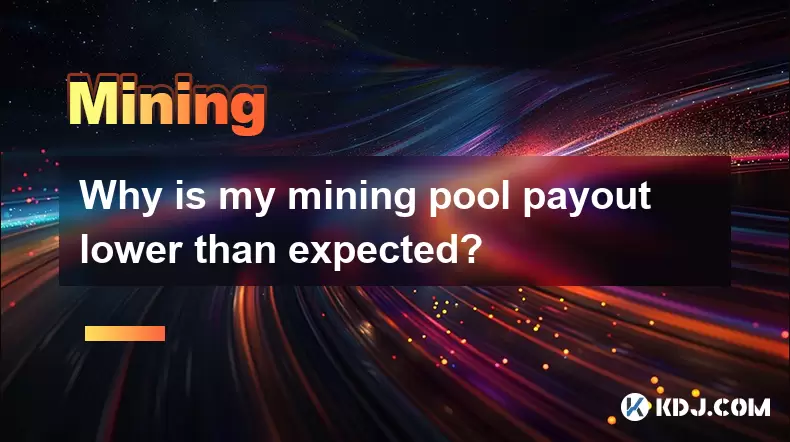
Why is my mining pool payout lower than expected?
Jul 03,2025 at 02:21am
Understanding Mining Pool Payout StructuresWhen you join a mining pool, it's important to understand the specific payout structure that the pool uses. Different pools operate under different reward systems, such as Pay Per Share (PPS), Proportional, Score-based, or Pay Per Last N Shares (PPLNS). Each method affects how and when miners receive their rewa...
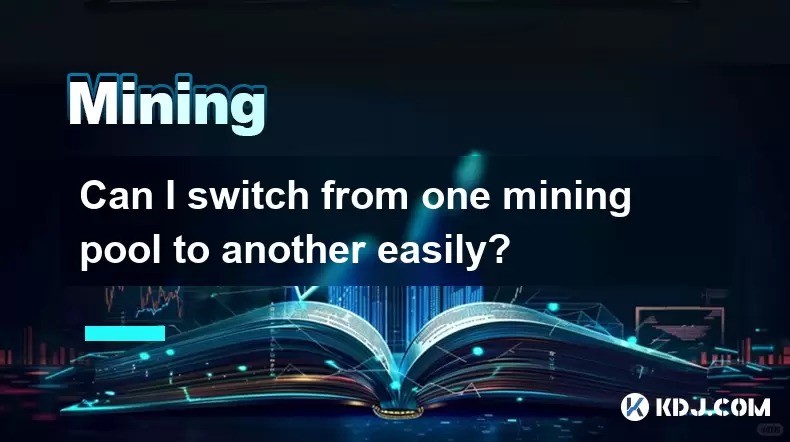
Can I switch from one mining pool to another easily?
Jul 05,2025 at 07:33pm
Understanding Mining Pools and Their Role in Cryptocurrency MiningIn the realm of cryptocurrency mining, mining pools play a crucial role in enabling individual miners to compete with large-scale operations. A mining pool is a group of miners who combine their computational resources to increase the chances of successfully mining a block. When a block i...
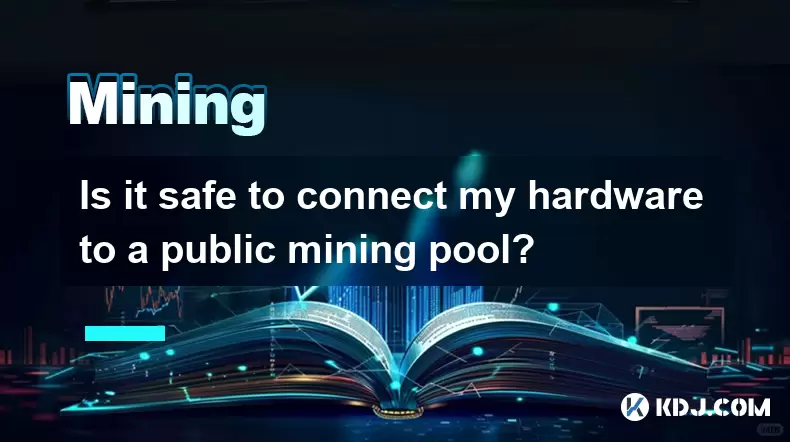
Is it safe to connect my hardware to a public mining pool?
Jul 05,2025 at 07:31pm
Understanding the Risks of Public Mining PoolsWhen considering whether it is safe to connect your hardware to a public mining pool, it’s essential to understand what a public mining pool entails. A public mining pool is a shared resource where multiple miners contribute their hashing power to increase the likelihood of solving a block and earning reward...

Comparison of solo mining vs joining a mining pool
Jul 05,2025 at 07:17pm
Understanding the Basics of Cryptocurrency MiningCryptocurrency mining involves validating transactions and adding them to a blockchain through computational power. Miners use specialized hardware, such as ASICs or GPUs, to solve complex cryptographic puzzles. Upon successfully solving these puzzles, miners are rewarded with newly minted coins. This pro...

How to tell if a mining pool is legitimate or a scam?
Jul 03,2025 at 12:35pm
Understanding the Role of Mining PoolsMining pools play a crucial role in cryptocurrency mining by allowing individual miners to combine their computational resources and increase the likelihood of earning block rewards. A legitimate mining pool distributes rewards fairly, maintains transparency in operations, and has a strong community presence. Howeve...

What software do I need to join a mining pool?
Jul 05,2025 at 07:32pm
Understanding Mining Pools and Their RequirementsJoining a mining pool is an essential step for many cryptocurrency miners who want to increase their chances of earning block rewards. Unlike solo mining, where you attempt to mine blocks alone, a mining pool allows multiple miners to combine their computational resources to solve blocks more consistently...

Why is my mining pool payout lower than expected?
Jul 03,2025 at 02:21am
Understanding Mining Pool Payout StructuresWhen you join a mining pool, it's important to understand the specific payout structure that the pool uses. Different pools operate under different reward systems, such as Pay Per Share (PPS), Proportional, Score-based, or Pay Per Last N Shares (PPLNS). Each method affects how and when miners receive their rewa...

Can I switch from one mining pool to another easily?
Jul 05,2025 at 07:33pm
Understanding Mining Pools and Their Role in Cryptocurrency MiningIn the realm of cryptocurrency mining, mining pools play a crucial role in enabling individual miners to compete with large-scale operations. A mining pool is a group of miners who combine their computational resources to increase the chances of successfully mining a block. When a block i...

Is it safe to connect my hardware to a public mining pool?
Jul 05,2025 at 07:31pm
Understanding the Risks of Public Mining PoolsWhen considering whether it is safe to connect your hardware to a public mining pool, it’s essential to understand what a public mining pool entails. A public mining pool is a shared resource where multiple miners contribute their hashing power to increase the likelihood of solving a block and earning reward...
See all articles

























































































